-
<研究者インタビュー> 細井浩一教授 (立命館大学映像学部/ARCセンター長) "Digital Game Research, Internationalization and Virtual Education" ※本文は英語です2020年6月12日(金)
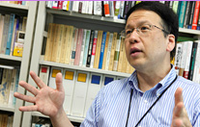 Prof. Hosoi, thank you for your time today. As one of the pioneers in digital game research in Japan, you have successfully expanded the "Game Archive"-project over the last two decades. Moreover, the Ritsumeikan Center for Games Studies (RCGS) has been established in 2011. Could you tell us about your recent updates?
Prof. Hosoi, thank you for your time today. As one of the pioneers in digital game research in Japan, you have successfully expanded the "Game Archive"-project over the last two decades. Moreover, the Ritsumeikan Center for Games Studies (RCGS) has been established in 2011. Could you tell us about your recent updates?Prof. Hosoi: There have been some positive developments in the last 4-5 years. Firstly, government funding from the Agency of Cultural Affairs has been increased for the RCGS which enabled us to create new rooms and facilities for game research and archiving - despite the notorious lack of space on Kinugasa campus.
Secondly, networking has been greatly expanded, especially with overseas institutions. While we only had a few connections with institutions in the US about five years ago, we have been able to form new alliances with overseas institutions, particularly in Europe.
For example, we have connected with the Computerspielemuseum Berlin and the University of Leipzig in Germany, the National Videogame Museum in the UK, The Video Game Museum of Rome in Italy, and the Bibliothèque nationale de France.
In the future, I hope to further expand international collaboration, for instance, to Russia and Australia.
How have you been able to obtain a better picture of game archives around the world?
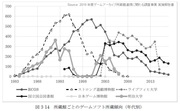 Prof. Hosoi: As part of our ongoing research, we have been conducting interviews with international collaborating institutions and made an interesting discovery. For example, we found variations in the game software held by institutions around the world in terms of both quantity and quality. While Ritsumeikan University, Meiji University, and the Strong Museum of Play (USA) own much game software from the late 1980s - 2000s, the National Diet Library and University of Leipzig possess a high percentage of games from the 2000s onward. Hence, there is a gap in the number of collections in different institutions depending on the period.
Prof. Hosoi: As part of our ongoing research, we have been conducting interviews with international collaborating institutions and made an interesting discovery. For example, we found variations in the game software held by institutions around the world in terms of both quantity and quality. While Ritsumeikan University, Meiji University, and the Strong Museum of Play (USA) own much game software from the late 1980s - 2000s, the National Diet Library and University of Leipzig possess a high percentage of games from the 2000s onward. Hence, there is a gap in the number of collections in different institutions depending on the period.You also organized the Ritsumeikan Game Week for the first time last year. What was your motivation behind this?
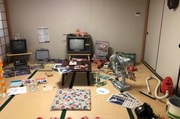 Prof. Hosoi: Yes, the Ritsumeikan Game Week comprised of three international game-related academic conferences - IEEE SeGAH 2019, DIGRA 2019, and Replaying Japan 2019 - and it marked a milestone for us. It was the first large scale event about game research hosted by Ritsumeikan University with more than 650 attendants, including many game researchers from overseas.
Prof. Hosoi: Yes, the Ritsumeikan Game Week comprised of three international game-related academic conferences - IEEE SeGAH 2019, DIGRA 2019, and Replaying Japan 2019 - and it marked a milestone for us. It was the first large scale event about game research hosted by Ritsumeikan University with more than 650 attendants, including many game researchers from overseas.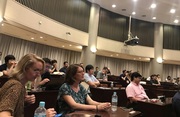 You see, the problem is that there still exists a big gap in the industry versus academic activity in Japan. On one hand, the entertainment game industry - with household names such as Nintendo - is of immense cultural and economic value in the modern global world. On the other hand, academic research has been extremely scarce in Japan compared to overseas.
You see, the problem is that there still exists a big gap in the industry versus academic activity in Japan. On one hand, the entertainment game industry - with household names such as Nintendo - is of immense cultural and economic value in the modern global world. On the other hand, academic research has been extremely scarce in Japan compared to overseas.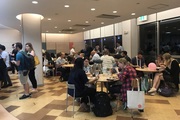 Organizing such an event was an attempt to close this gap and a great chance to further develop the Japanese game studies community. Furthermore, it provided an excellent platform for the international game research community to come together.
Organizing such an event was an attempt to close this gap and a great chance to further develop the Japanese game studies community. Furthermore, it provided an excellent platform for the international game research community to come together.Regarding digital video games, the World Health Organization (WHO) classified video game addiction as a mental disorder last year. However, the WHO has started to encourage people to play games during the coronavirus pandemic. What is your opinion on this?
Prof. Hosoi: I suppose that there are always two sides to game and gaming. Serious gaming can be considered as a useful tool for education.
Here at the ARC, our primary mission is to develop academic and cultural education by merging humanities and science. To accomplish this, we have, for example, constructed collaborative serious games about Japanese culture in the 3D virtual space to encourage cross-cultural learning between Japanese and non-Japanese players.
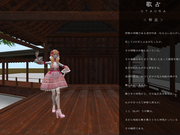 Moreover, we make use of the virtual platform "Second Life" to showcase the traditional Japanese Noh dance with the technology of motion capture. Using a famous anime character, for example, enables us to connect the 1000-year-old dance culture of Noh with popular modern Japanese culture. In this way, we can facilitate the learning about Japanese traditional culture by adding an "entertainment" factor.
Moreover, we make use of the virtual platform "Second Life" to showcase the traditional Japanese Noh dance with the technology of motion capture. Using a famous anime character, for example, enables us to connect the 1000-year-old dance culture of Noh with popular modern Japanese culture. In this way, we can facilitate the learning about Japanese traditional culture by adding an "entertainment" factor.I think that gamification plays a significant role in the future of education. Since digital platforms are accessible anywhere, virtual learning has become even more relevant, especially for our international students who have not been able to enter the country due to the recent pandemic.
Speaking of the ARC's mission, the ARC assumed its role as the International Joint Digital Archiving Center for Japanese Art & Culture (ARC-iJAC) last October upon accreditation by the MEXT as an International Joint Usage / Research Center. Can you tell us more about your plans for the new fiscal year?
Prof. Hosoi: Unfortunately, due to the coronavirus pandemic, we had to cancel many overseas trips. I was looking forward to visiting Belgium for the first time and meeting with researchers at the University of Liège.
On the other hand, we have started to hold our International ARC Seminars online and are considering the same for ARC Day 2020 and other conferences. We are also continuously working on expanding the ARC Online Research Space, a virtual research platform that provides opportunities for networking, digital exhibitions, and building new databases for digital humanities researchers across the world.
This year, we are determined to further internationalize our research activities while promoting interdisciplinary research collaboration of humanities and science within our university.
Can you elaborate on this a little?
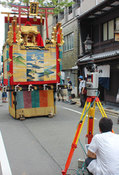 Prof. Hosoi: In April, the ARC-iJAC announced the Adopted Joint Research Projects for the fiscal year of 2020, including projects from the US, UK, Germany, and Indonesia, amongst others.
Prof. Hosoi: In April, the ARC-iJAC announced the Adopted Joint Research Projects for the fiscal year of 2020, including projects from the US, UK, Germany, and Indonesia, amongst others.For instance, the Indonesian project, in which Prof. Satoshi Tanaka and Prof. Akira Maeda from the College of Information Science and Engineering are involved, is about the digital archiving of the UNESCO World Heritage site "The Borobudur Temple Compounds" and the development of high definition 4D visualization contents of the archaeological site.
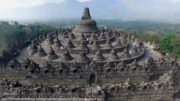 We are going to leverage our strengths in digital archiving of cultural heritage objects using the method of laser measurement, which has previously been applied to the Yamahoko (decorated floats) of Kyoto's Gion Festival, for this project in Indonesia on a bigger, international scale.
We are going to leverage our strengths in digital archiving of cultural heritage objects using the method of laser measurement, which has previously been applied to the Yamahoko (decorated floats) of Kyoto's Gion Festival, for this project in Indonesia on a bigger, international scale.Internationally, it seems that Japanese culture has been gaining more popularity in recent decades, also thanks to digitization...
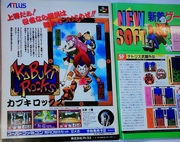 Prof. Hosoi: Yes indeed. However, while modern Japanese culture is very popular among the younger generations, the ARC considers the preservation of ancient and traditional Japanese culture as equally crucial. Therefore, we pursue and encourage the re-discovery of the value of peripheral cultural resources. In this regard, my students are conducting research on Jidaigeki (samurai period drama), video game-related materials, and regional videos from tourism associations, for example.
Prof. Hosoi: Yes indeed. However, while modern Japanese culture is very popular among the younger generations, the ARC considers the preservation of ancient and traditional Japanese culture as equally crucial. Therefore, we pursue and encourage the re-discovery of the value of peripheral cultural resources. In this regard, my students are conducting research on Jidaigeki (samurai period drama), video game-related materials, and regional videos from tourism associations, for example.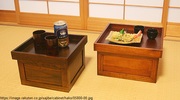 I can still recall that when I was a child, I discovered this small portable wooden table at home and did not quite understand its purpose. This table called Hako-zen, which also appeared in samurai movies, had been widely used in Japan since the Edo period, representing the simple life of the past. Nonetheless, its usage has largely diminished in post-war Japan.
I can still recall that when I was a child, I discovered this small portable wooden table at home and did not quite understand its purpose. This table called Hako-zen, which also appeared in samurai movies, had been widely used in Japan since the Edo period, representing the simple life of the past. Nonetheless, its usage has largely diminished in post-war Japan.These peripheral cultural resources may have little commercial value nowadays, yet it is important to recognize their historical value and pass on local cultural heritage to future generations.
Prof. Hosoi, thank you very much for your time today.
(This interview was conducted by Yinzi Emily Li.)













